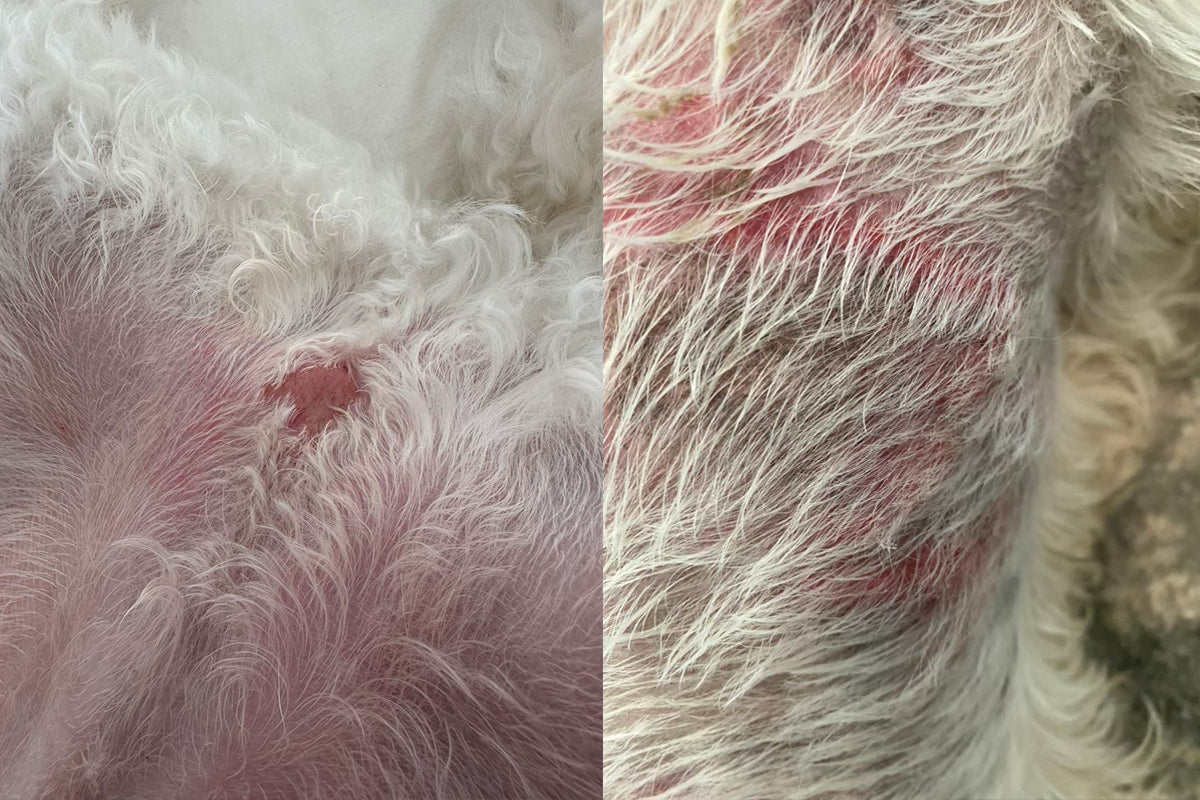Got a question?
Can’t find an answer on our blog? Click here to ask Dr Lisa.
Please select your store

We will include your personalised message on an elegant gift card and your order will be wrapped in a beautiful gift box.

Also known as pyotraumatic dermatitis or acute moist dermatitis, hot spots are itchy areas of skin inflammation that some people may mistake for insect bites. Dogs will repeatedly scratch, chew and lick the site, making the inflammation worse and often causing a secondary bacterial infection.
They initially start as red hairless areas. As the secondary infection begins, hot spots become moist and may discharge pus or fluid, which can lead to crusting and matting of the surrounding hair. Hot spots are painful, very itchy and will expand quickly as a dog’s scratching continues to traumatise the area.
This unintentional self-trauma becomes problematic as the cycle continues: itch, lick, chew, infection. Sad tails.
Daily brushing with a Slicker Brush and Rake and/or Comb will be your best prevention. Not only will you reduce and remove knots, you’ll be able to identify inflamed areas of skin before they become a problem.
If you notice your dog chewing a localised area, inspect their coat and get them to the vet for further assessment. A topical treatment and possibly a systemic medication may be prescribed which can help you manage these pesky spots in future.
If your dog has allergic skin disease, using an Omega-3 fatty acid supplement can help reduce inflammation and the symptoms of skin allergies.

Can’t find an answer on our blog? Click here to ask Dr Lisa.